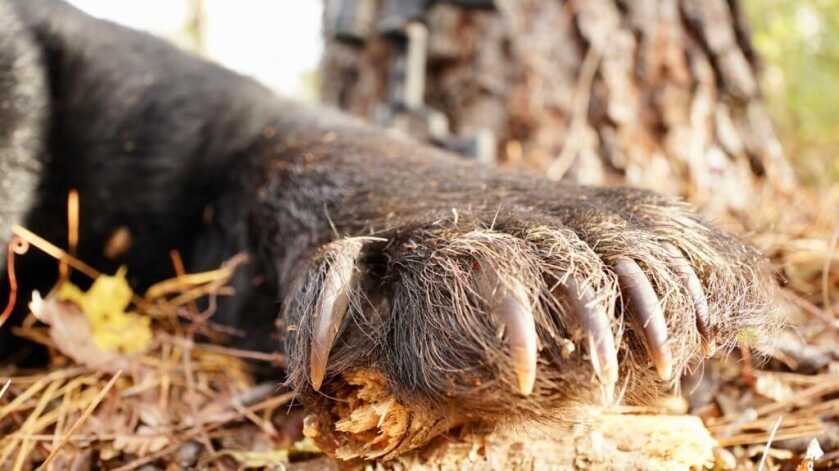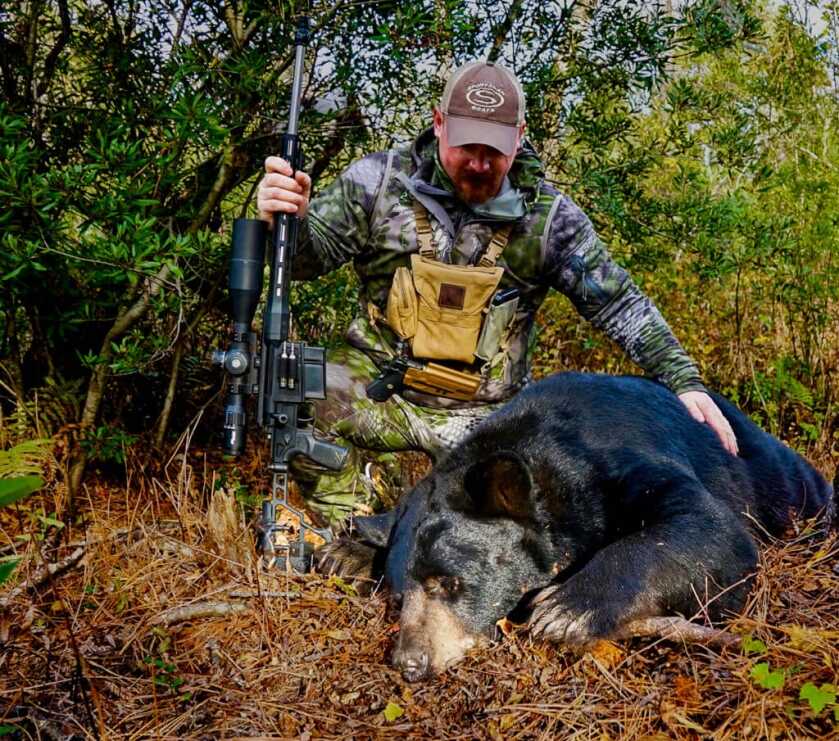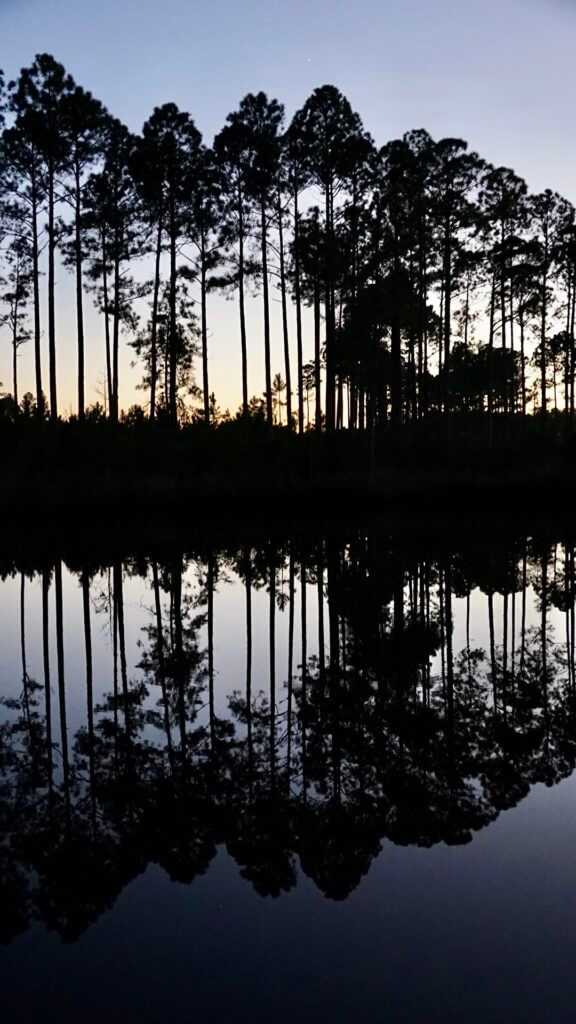Jake Hodges, speaks in a heavy accent specific to coastal Carolina. Even though I lived in the area for years, I still wish at times that he had sub-titles.
“We ent got no wudder. Ent been no rain. Most years ye hear dem bears comin’– spleshin’ erry step through dem trees and dat brush. Now it’s dry and they quiet.” says Jake.
Jake grew up here around these bears. I’m pretty sure his first love is shooting ducks, but Jake has a love of all hunting that lights up in his eyes. He’s a laid-back guy, not getting excited about much, and I need him badly on this hunt because what we are trying to do is beyond the scope of my experience. And when it comes to bear, I am very excitable.

The world record black bear was killed near where we are hunting back in 1998. It weighed 880lbs. In most of the US, an average boar black bear weighs 250 lbs and a sow 150lbs. The largest sow taken in this region was nearly 450lbs. Currently, taxonomists have identified 16 sub-species of the black bear in North America, distinguished by subtle differences in appearance and DNA. Scientists have not identified these coastal Carolina bears as a subspecies, and I think that’s a mistake because there is something very different about a bear that gets twice as big as they do in the rest of the country.

There is a 120,000-acre wildlife refuge which allows these bears some security and a place to increase their age class in the region. Bear hunting is not allowed in the refuge. Boars do not hibernate and instead, feed all winter long. The sows only hibernate if they need a secure place to have cubs. The bears have a buffet of nutritious foods to help them grow to these enormous sizes. There are more than five different types of nut-bearing trees, and the region is exceptionally fertile for row crops like wheat, corn, soybeans, and peanuts. This is the perfect storm for massive bears.

Spot and stalk isn’t an option in this thick brush that I can barely walk through, calling isn’t a productive method, and sitting baits doesn’t produce since the bears feed nocturnally– and it’s a full moon. These bear are habitual, walking the same trails, even in the same footsteps, day after day. Jake and I sit over a well-used bear trail where there is a gap in the trees and brush 30 yards away. The wind is blowing directly from us to the trail and I think there is no conceivable way this is going to work. Jake told me the night before that these bear don’t care about scent, which is 180 degrees off from everything I think I know about bears. One thing I do know is that you have to trust local guides, and I trust Jake.

At first light, a boar steps into the gap, pauses for a moment, then crosses a canal and silently slips back into the brush. Jake shows me four fingers on his hand indicating this to be a 400lb bear. He was literally the biggest black bear I’ve ever seen, and if I was on my own here, I’d have pulled the trigger and never looked back. The bear definitely smelled us, but he also paused for a moment and gave me a good idea how much time I could expect to have to acquire the target and break a shot. Conservatively, 3 seconds.
Half an hour slides past as tundra swans, mallards, gadwall, and wood duck cross the sky traveling between feed and water. I feel Jake’s elbow nudge me in the ribs and look up to see just the head of a bear protruding from the brush. He turned towards us and lifted his nose slightly as I shouldered the rifle. Had I known the ranges I expected to hunt I’d have equipped the gun with a red dot and magnifier, but instead I had a Sig Sauer 5-30 Tango6 with the mRad DEV-L reticle on top a prototype Sig Sauer Cross rifle. There’s value in using the same scope all the time in terms of speed and familiarity. Fortunately, the 5X setting gave me plenty enough field of view. By the time I found the bear in my scope he was starting to move, my first two seconds had expired, one Mississippi remaining. I found his shoulder with the illuminated reticle and pressed the trigger. We listened for the death roar and heard none, probably because the bear’s lungs were gone. We found him quickly at the end of a wide blood trail.

Back at the skinning shed another hunter had brought in a boar that weighed over 615 lbs and had nearly 6 inches of fat covering his backstraps. My bear was big too, but well under that 600lb mark. The size of the animals I hunt is part of the story and experience, but for me it is far from the most important part. Mine is the biggest black bear I’ve ever personally seen “on the hoof,” and I am tremendously appreciative of the landowner for allowing me to come hunt, and to Jake for making sure everything went smooth.
Of the 300,000 black bear estimated to be living in the lower 48, around 7% of them live in North Carolina. The density of the bear population in this area is the greatest of anywhere in the Southeast, at around 2 bears per square mile. Their population had crashed to around 35 animals in 1974, and hunting was not allowed again until 1992. The recovery of this population (dare I say subspecies?) has coincided with funding and management from hunters.

Unfortunately, there isn’t much public hunting in the area, and outfitters are over-charging in the wake of some celebrity types who’ve hunted there. You can go grizzly hunting in Alaska for similar money, but then again, these black bear may just end up being larger than those grizzlies. Does size matter to you?


What caliber is your rifle .
useing the best possible gun and information for you hunt is good information for promising hunt is good to know as well